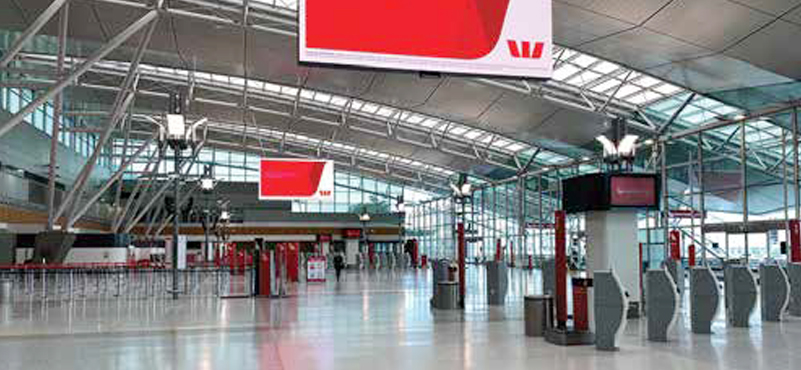With the unprecedented buoyancy in Indian aviation business (growing at a 20 percent plus in the domestic segment since the beginning of 2015) and promising projections in the medium to long run (this includes the grand theory that India would become the third largest aviation market in the world over the next one decade), the prospects of new players joining the fray in the scheduled category has been a talking point for the stakeholders in the recent past. An important element of the projected churnings includes a major shift towards regional space in the coming years. With India’s ten major destinations accounting for over 60 percent of the total air traffic, penetrating regional space is believed to be the next critical frontier to take Indian aviation growth story to the next level. Promotion of regional connectivity, in fact, is a crucial cornerstone of the government’s soon to be unveiled new civil aviation policy.

CEO & DIRECTOR,
ZOOM AIR
The theory that new players will jump on the bandwagon soon is likely to come true later in August when Gurgaon-headquartered Zoom Air takes to the domestic sky with scheduled operations. Originally known as Zexus Air (the NOC from DGCA was taken in 2014), its license changed hands and now wrests with a new business conglomerate which is pushing the venture in the name of Zoom Air now. Though senior officials of the company are not divulging much at this stage ( the formal promotional campaign is expected to begin early next month), in a brief exclusive chat with TourismFirst recently, Koustav Dhar, CEO & Director did indicate the broader strategy which this airline will pursue.
“We are ready to kickstart our operations and are just waiting for the final approval from DGCA. As things stand today, we expect to take off before August end. Post Vistara, we will be the first national carrier to get into the market though our emphasis would be to strongly position ourselves in those regional pockets where action is low today,” Dhar said.
Zoom Air plans to kickstart its operations with five Bombardier CRJ 200 LR aircrafts, taken on dry lease for five years. These are typically 50 seaters and are believed to be a major offering from Bombardier for players in regional connectivity space globally. And Zoom Air wants to make the most of this fleet size in connecting smaller cities and towns in the North-East region as well as in Northern India.
“In the initial phase, Delhi and Kolkatta are going to be our major hubs,” Dhar pointed out. On a cumulative basis, Zoom Air intends to step into the market with 16 destinations coverage route map. For instance, it has spotted Durgapur, Dimapur, Aizwal, Jorhat, Shillong, and Tezpur in the North-eastern side which will be linked to Kolkatta as hub. For its connectivity plans in North India, it is likely to have Delhi T3 terminal as its hub; the major focus would be destinations in Rajasthan and Gujarat.
“In Rajasthan, apart from its capital Jaipur, we will be covering Jodhpur, Udaipur, and Jaisalmer. And in Gujarat, our plan is to cover Jamnagar, Rajkot, Bhavnagar, Surat and Baroda,” Dhar specified.
Interestingly, Zoom Air is promising to connect some destinations where traffic is quite low at the moment and there is not much to write home about in terms of scheduled operations. For instance, the airport at Durgapur has only one scheduled operator (Air India flies from Kolkata with thrice weekly frequency) and nobody has dared to commence regular operations from Jaisalmer airport even as it has been ready for the past two years. In that sense, the route connectivity plan of Zoom Air appears out to have some strong contrarian element. Dhar, however, presents his own logic for picking up these low-base destinations.
“If you try to serve these markets with an A-320 kind of aircraft, you would obviously find it difficult to fill them. But if you push with 50 seater planes, you will find enough takers. The propensity to fly is certainly growing among travellers in smaller towns and cities and our Bombardier CRJ offerings could better respond to the present demand and supply equations at these centers,” Dhar explained.
The CEO of soon to be launched airline, however, did not speak much on the pricing policy given his repeated assertion that Zoom Air’s 50 seater planes will offer full service facilities.
“It would be reasonable, something in the vicinity of what is charged for ferrying passengers on turboprop planes,” he responded. However, given the broader nature of Zoom Air’s proposed operations, its connectivity to smaller cities from noted metro hubs may well mostly turn out to be less than an hour flight, falling into the regional category space where government is trying to bring in a price cap of `2,500. The government in its draft civil aviation policy has talked of this kind of incentive to attract travellers from high-end railway travel to the airline segment. Of course, this would also mean incentivising the airline operator by the center and the states. When pointed out that in the not so distant future, there could be this compelling rule which will not allow the airlines focusing on expanding the regional market to sell their tickets for more than `2,500, Dhar responded, “ They are currently working on the new policy and let’s see what it says in terms of promoting regional connectivity. We will obviously follow those rules and we are prepared for them.”




































